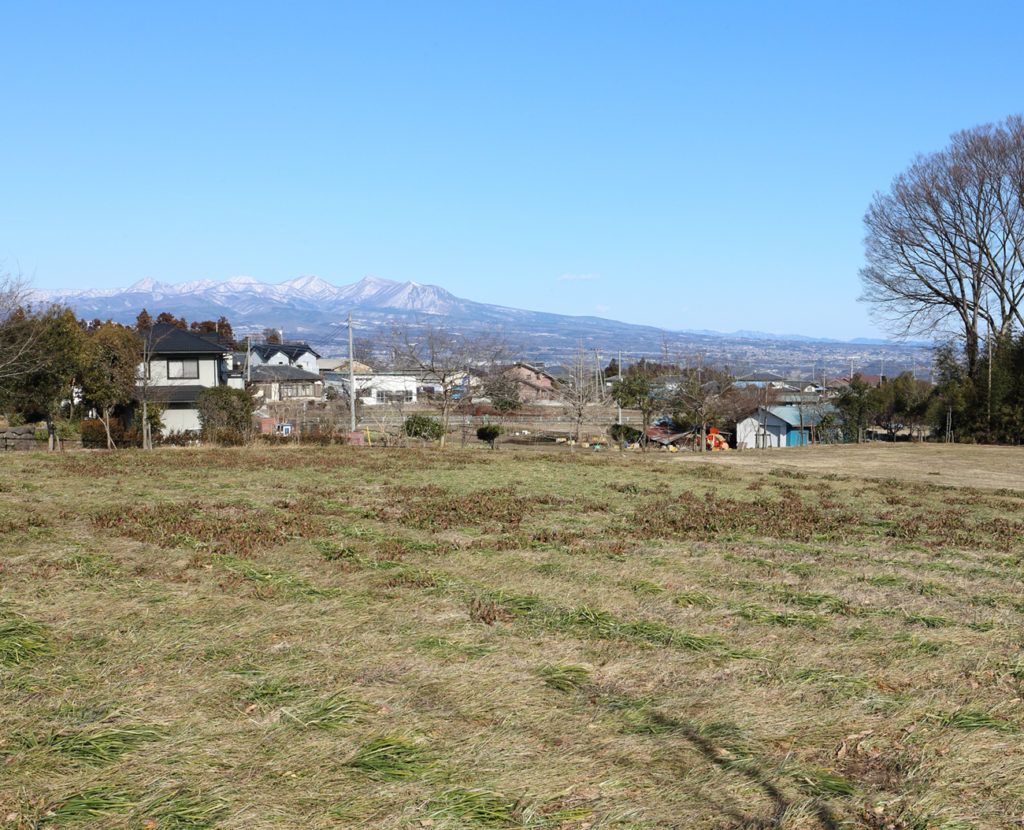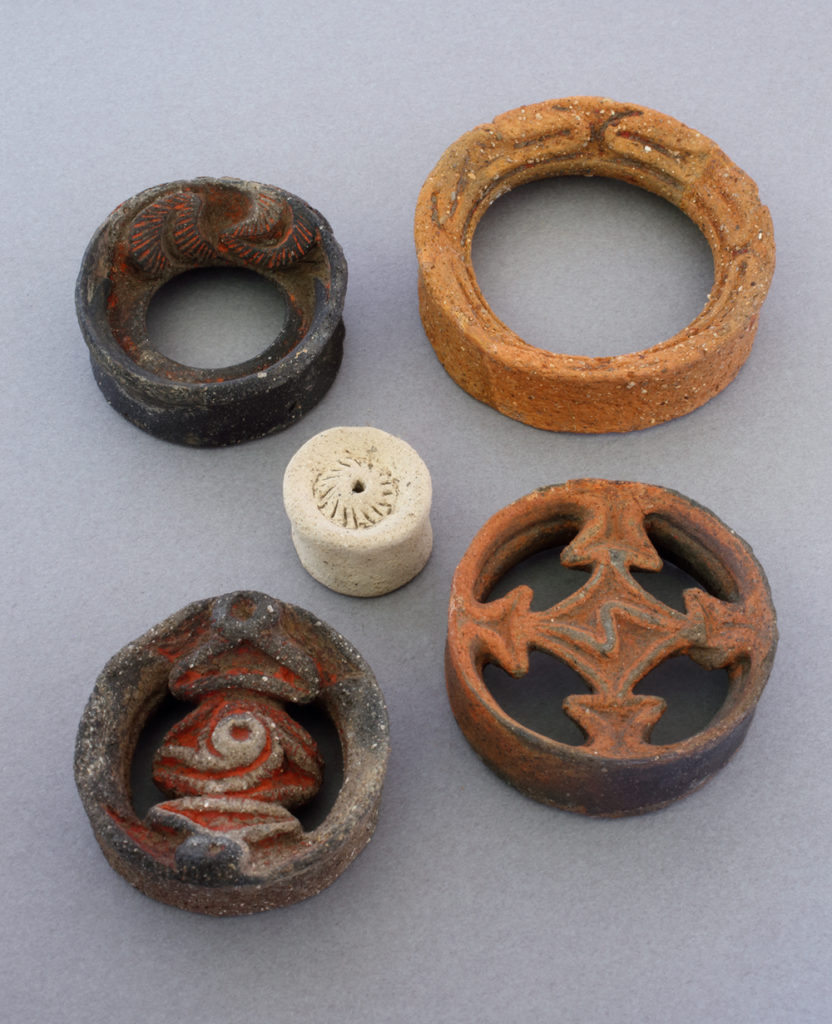3,000-year-old Earring Culture
The Jomon people crafted stone axes, arrowheads, and other hunting tools as well as pottery and other clay items with which to set the dining table. Every time I touch such handicrafts, I invest all my concentration in the tips and pads of my fingers to stroke the undulations, caress the lines, and trace the molded clay. For me, doing so creates the illusion that the great gulf of time and space between me and the Jomon people is closing in midair. How real is the connection? I can’t say for sure, except that I certainly don’t feel it when looking through a glass display case at the museum. Direct contact seems to make the air come back to life, and the artifact to acquire a voice and whisper its story.
In early March, I visited Gunma Prefecture’s Shinto Village, home to the Kayano site with the ruins of a settlement dating back to the Late Jomon and Final Jomon periods. I handled the earrings unearthed there with permission from Shoko Tsunoda, a curator at the Shinto Village Museum of Earrings. The intricacy of the designs was astonishing enough, but I also felt a sensation that I had never felt before in the course of my Jomon fieldwork—the presence of people, namely the Jomon people, at close range. This may have been because earrings are not a mere tool but a more personal, decorative item. It may have been that the earrings still harbored vestiges of the late wearer and of the creator.

As many as 600 earrings were excavated primarily from the dwellings at the Kayano site. This is a rare find in all of Japan. Someday, it would be interesting to pursue the earring culture as it spread out nationwide, especially eastward.
Compared with the earrings worn by modern people today, the clay earrings that were worn by the Jomon people are for the most part bigger and bulkier, and some are heavy enough to be straightforward clumps of earth. Each piece measures over 8 centimeters in diameter, leading me to imagine it was worn not so much attached to the earlobe but dangling from it, similarly to the way one hangs a pendant from a necklace or accessories from a belt.
A closer look at the jewelry reminded me of a sight I saw when traveling through northern Myanmar some years ago. I met an old man from a hunter tribe of the Nagas, who with his earrings removed, had earlobes dangling with an empty hole. Perhaps the fashions of an ethnic minority living in the Asian frontier today aren’t all that different from the earring-wearing Jomon people. It seemed to me as though a custom thousands of years old had been passed down to the present.

We decided to cover the site on foot and take in the view seen by the earring-wearing Jomon people. The sunny slope at an elevation of about 300 meters commands a view of Mt. Haruna to one side and Mt. Akagi to the other.
Ms. Tsunoda said the excavation also revealed a place that was used to collect spring water. I stood at the spot where the precious water welled up, and found that it was a stone’s throw from the settlement. Ms. Tsunoda then showed me a framed photograph of a rainmaking ritual, which she borrowed from a neighboring shrine. It showed a lion dance offered as a gift to Funao Falls in 1952.

The next morning, I took a stroll along the still snowy mountain path to the waterfall, wondering if the Jomon people followed the same path too. The spring water from Mt. Haruna was creating a flow and descending over the cliff. It must have delivered a godsend to innumerable people over the millennia. I bowed and made my way down the mountain.
<PAPERSKY no.44(2014)>

Jomon Fieldwork | Nao Tsuda × Lucas B.B. Interview
A conversation between ‘Jomon Fieldwork’ Photographer and writer Nao Tsuda and Papersky’s Editor-in-chief Lucas B.B. The two discuss the ways Jomon culture continues to play an important role in modern day Japan. The video was filmed at Papersky’s office in Shibuya in conjunction with Tsuda’s exhibition “Eyes of the Lake and Mother Mountain Plate” held at the Yatsugatake Museum in Nagano.
Nao Tsuda | Photographer
Through his world travels he has been pointing his lens both into the ancient past and towards the future to translate the story of people and their natural world.
tsudanao.com











